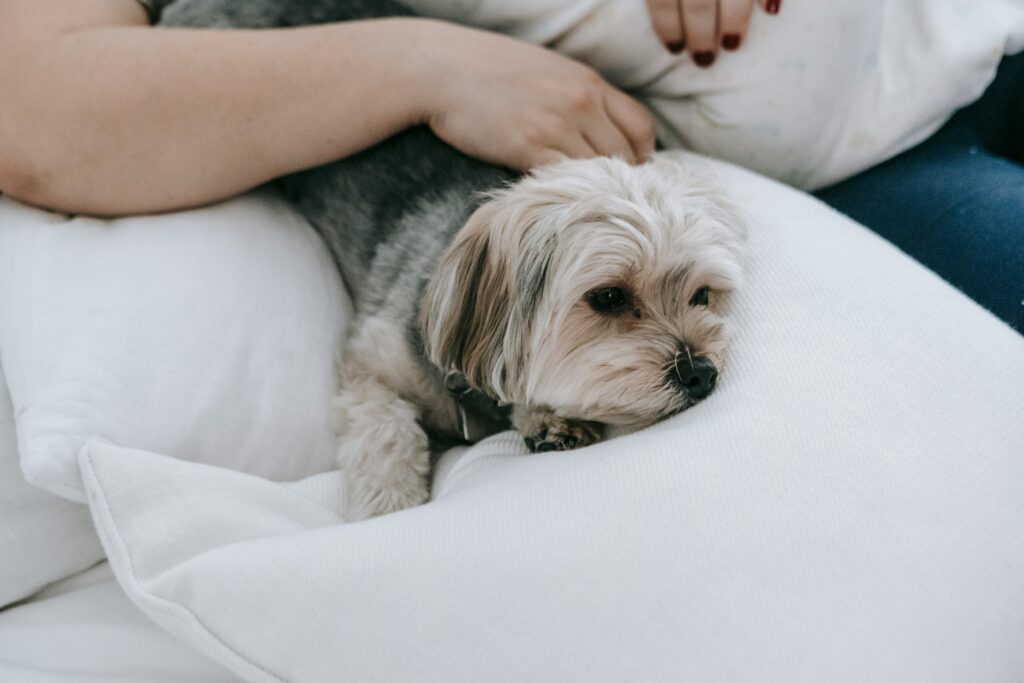
Few things are more frustrating for new puppy parents than this common scenario: you take your puppy outside, wait patiently, and as soon as you bring them back indoors—they pee on the floor. If this sounds familiar, you’re not alone. Many puppies go through this stage, and while it can be confusing, there are clear reasons and reliable solutions.
Let’s break down why this happens and what you can do to fix it.
1. Understand Why It Happens
There are a few possible reasons your puppy might wait to pee inside, even after being taken outdoors:
- They were distracted outside: Puppies are naturally curious. If they’re sniffing, playing, or overwhelmed by new sights and sounds, they may forget to do their business.
- They didn’t fully empty their bladder: Sometimes puppies pee a little outside and then release the rest once they’re relaxed back inside.
- They don’t associate outside with potty time yet: Especially early on, puppies might not understand that they’re supposed to relieve themselves outside.
- It’s a comfort issue: Indoor environments feel safe and familiar, so your puppy might not feel secure enough to pee outdoors.
- Inconsistent schedule: An irregular potty routine can confuse your puppy’s instincts and lead to indoor accidents.
2. Make Potty Breaks Boring (and Effective)
Your first goal is to help your puppy focus outside. Don’t treat outdoor time as playtime—at least until they’ve gone potty.
Here’s how to structure potty time:
- Take your puppy to the same spot every time.
- Keep them on a leash to reduce distractions.
- Don’t play, talk, or offer too much stimulation—just wait calmly.
- Use a cue word like “go potty” to help them learn what you expect.
- When they finally go, praise them and offer a treat immediately.
If they don’t pee after 5–10 minutes, bring them back inside but keep them leashed and supervised, and try again in 10–15 minutes.
3. Supervise Closely After Coming Inside
Once back indoors, don’t give your puppy free roam right away—especially if they didn’t go outside.
Instead:
- Keep them in a confined area, like a playpen or small room.
- Or use a leash to keep them tethered to you.
- Watch for signs they need to go, such as sniffing, circling, or squatting.
If you notice these signs, bring them right back outside. Over time, this teaches them where they’re supposed to go.
4. Stick to a Reliable Schedule
A consistent routine helps your puppy’s body adjust and prevents surprises. Here’s a typical potty schedule for young puppies:
- First thing in the morning
- After every meal
- After naps
- After playtime
- Before bedtime
- Every 1–2 hours for very young puppies
As your puppy grows, they’ll be able to hold it longer and stick to a more regular rhythm.
5. Reward the Right Behavior
Positive reinforcement goes a long way. When your puppy pees outside, celebrate with a cheerful voice, gentle petting, and a small treat. Make sure this praise happens immediately after they finish peeing—not once you’re back inside.
This helps them build a positive association between going potty outside and receiving rewards.
6. Avoid Punishment
If your puppy has an accident inside—even right after being outside—never punish them. Yelling, scolding, or rubbing their nose in it doesn’t help and can create fear or confusion.
Instead, clean the spot thoroughly using an enzymatic cleaner to remove any lingering scent that might attract them to the same spot again.
7. Be Patient—This Is Temporary
It’s completely normal for puppies to take a little while to get the hang of potty training. It can take a few weeks to a few months, depending on the puppy’s age, breed, and personality.
Even if you’re doing everything right, accidents may still happen. The key is consistency and calm guidance.
8. When to See a Vet
If your puppy was doing well and suddenly starts having frequent indoor accidents, or if you notice excessive urination, blood in urine, or signs of discomfort, it’s worth scheduling a vet checkup. These could be signs of a urinary tract infection or another medical issue.
Conclusion
If your puppy pees right after coming inside, it’s not a sign that they’re being stubborn—it’s a sign they need clearer structure, better timing, or a bit more practice. With patience, a consistent schedule, and the right reinforcement, your puppy will soon learn exactly where and when to go.
Keep showing up with love and guidance—you’re doing a great job navigating these early stages of puppy life!
